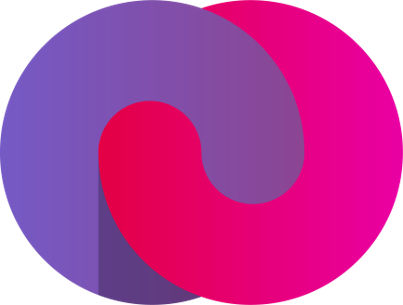The FUTURESILIENCE project has set out to strengthen European economic and social resilience through an enhanced ability to adapt and respond quickly to future crises. To reach this goal, the project sees Research and Innovation (R&I) playing a key role in building the capacity to anticipate, better prepare and be more flexible in crisis periods.

“They’re good in a crisis” is generally considered a compliment. And it’s a characteristic that Europe is likely to need more of in the near future. ‘Crisis’ can mean a time of peril or a moment of decision. Europe has faced multiple crises in recent years, and factors such as climate change mean that they are likely to continue or even increase in frequency in the future. The challenge is not only to respond well to such crises but also to be prepared.
The FUTURESILIENCE project is running 10 'Future Resilience Labs', bringing stakeholders together to apply Foresight and participative methodologies. The aim is to develop evidence-based strategies that speed up the use of R&I findings in building economic and social resilience.
Horizon Futures Watch spoke to the FUTURESILIENCE project manager, Matias Barberis of the European Future Innovation System (EFIS) Centre in Brussels, Belgium.
What do you want to achieve with the FUTURESILIENCE project?
We would like to contribute strengthening social and economic resilience in Europe, mobilising local communities and policymakers and highlighting the importance of valorising knowledge for putting resilience into practice. Recently, there has been a lot of public interest in the concept of resilience, even while academics were talking about it for quite some time.
How does strategic Foresight fit into the work of the FUTURESILIENCE project?
We focus on the vulnerabilities that are common to multiple types of crises to understand how they may evolve in the future. We aim to understand what the typically impacted areas of a society or the economy are when a crisis hits. By using scenario development, the project aims to test evidence-based policy options that will strengthen the societal fabric in different situations. We plan to develop scenarios by using different foresight tools such as weak signals or wild cards, assessing different factors that potentiate or mitigate impacts of crises in diverse areas like education, economy, finances, biodiversity or welfare.
How do different kinds of crises contribute to social inequalities and what types of crises are you looking at?
Societal resilience is a context-dependent concept. Crises may take place instantly or they could develop very slowly, such as an economic or political crisis. If a crisis takes place and the societal fabric is not well prepared, it will highlight all the vulnerabilities of this society. For example, inflation can have impacts on salary structures and the capacity of vulnerable groups to deal with everyday life expenses. A blackout can impact operations in a supply chain or affect transport system operations. Therefore, the idea of working in an anticipatory manner is understanding how to reduce vulnerabilities and strengthen the capacity for societies to be better prepared. We don’t pretend to tackle every crisis in each pilot, but to focus on concrete societal challenges at local level (e.g. labour market, urban heat islands, health systems, housing, agriculture, etc.) and how they interact with diverse crises. The way crises are experienced and impact societies are different in each context. Moreover, we want to reduce the tendency of working in silos, as well as looking at the interdependence of crises and underlying factors.
To what extent could foresight help mitigate future crises (or how does it fall short)?
If you work with scenarios you can prepare for something you don’t know. Foresight can help deal with uncertainty in a more efficient way because you can be prepared for different types of options. Such an approach helps to strengthen community resilience in two ways. We can use the context scenarios to test the robustness of policies against different possible future situations. At the same time, going through the scenario process together sharpens participants‘ ability to observe the present more carefully, to notice emerging signs of crisis earlier and most importantly to mobilise collective intelligence from a wide range of perspectives to make sense of the change.
But foresight has a limit. If you don’t engage with the right groups of people and don’t try to anticipate their needs, then it won’t work. Generally, participative processes need to be feasible and inclusive. The project’s specific process is adapted for small- to medium-sized cities and there is still room for implementing at larger scale. However, this may pose some challenges to effective participation.
Which actors do you aim to support for building societal resilience and how are you going to do this?
Each pilot will start by mapping stakeholders, particularly at local level. Societal resilience as a concept is about the communities affected, not just the problem. If you work with resilience more broadly, you may need to consider communities and physical assets/infrastructures. Our project aims to focus on the societal side of resilience, with particular focus on citizen engagement and policymakers. Policy and decision makers should understand how people deal with complexities in everyday life, as well as which kinds of future people want to live in. Citizens can help framing the problems and actively participate in designing and implementing policy solutions. This increases legitimacy to build what is called community resilience.
What are the main achievements and milestones that the project has reached so far? What are the next steps?
In the first year of the project we will set the foundations of what we call “the experimentation phase”, in which 10 pilots will implement the project approach. The final 10 pilot cases will be announced mid-December 2023.
We are also developing a toolbox that includes process and policy tools: stakeholder analysis, foresight methods for developing scenarios and testing policies. The toolbox also includes a suite of thematic tools, each tailored to address specific or interrelated challenges and crises across various sectors, such as health, agriculture, finance, climate change, and disaster management.
The second product is a knowledge base compiling EU-funded research results and policy recommendations from international organizations. It aims to bolster local resilience and capacity, adding value to existing knowledge and supporting the science-to-policy process. Both the toolbox and the knowledge base will be openly available in 2025.
In an ideal world, how would you expect the future of resilience to develop in the next 20 years? What is your vision?
There should be more awareness on the need to work on resilience and facilitate the uptake of existing science-based solutions for increasing preparedness in a complex and uncertain world. The topic should permeate all levels of society and there should be more engagement in understanding what resilience means in different contexts.

